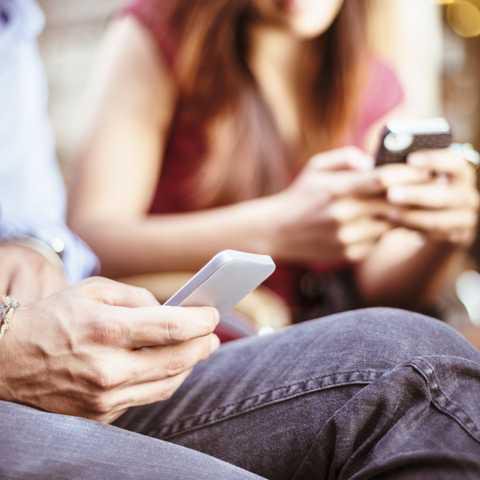Teens use social media at an almost constant rate, according to the Pew Research Centers latest report on teens and social media. And Facebook, somewhat unsurprisingly, still leads the way.
The report found that Facebook is the most popular and most frequently used social media app for American teens, with 71 percent of American teens using the social network. About half of all teens use Instagram, 41 percent use Snapchat and 33 percent use Twitter and Google+, Pew reported.
And 41 percent of teens use Facebook more frequently than any other social media app. Instagram was the second most frequently used app at 20 percent and Snapchat was right behind with 11 percent. Twitter, Google+, Tumblr and Vine were among the least frequently used social media platforms.
Boys and girls use social media in different ways, too. As you can see in this graph, Pew found that girls are more likely than boys to use Instagram, Snapchat, online pinboards like Pinterest and Tumblr.
The Pew Research Centers report also found a social media disparity between income levels. Though Facebook still reigns supreme as the most used social media platform for all households, teens from wealthier families use Instagram, Snapchat and Twitter more than people from low-income families. In fact, teens from families with a household income of $100,000 or more used Snapchat twice as much as those from a family with a household income of less than $30,000.
It should be noted that some of these differences may be artifacts of differences in use of these sites by these different subgroups of teens, Pew reported. For example, Instagram and Snapchat are image-based apps that often highlight lavish purchases, vacations and activities that low-income families may not be exposed to.
The report found that Facebook is the most popular and most frequently used social media app for American teens, with 71 percent of American teens using the social network. About half of all teens use Instagram, 41 percent use Snapchat and 33 percent use Twitter and Google+, Pew reported.
And 41 percent of teens use Facebook more frequently than any other social media app. Instagram was the second most frequently used app at 20 percent and Snapchat was right behind with 11 percent. Twitter, Google+, Tumblr and Vine were among the least frequently used social media platforms.
Boys and girls use social media in different ways, too. As you can see in this graph, Pew found that girls are more likely than boys to use Instagram, Snapchat, online pinboards like Pinterest and Tumblr.
The Pew Research Centers report also found a social media disparity between income levels. Though Facebook still reigns supreme as the most used social media platform for all households, teens from wealthier families use Instagram, Snapchat and Twitter more than people from low-income families. In fact, teens from families with a household income of $100,000 or more used Snapchat twice as much as those from a family with a household income of less than $30,000.
It should be noted that some of these differences may be artifacts of differences in use of these sites by these different subgroups of teens, Pew reported. For example, Instagram and Snapchat are image-based apps that often highlight lavish purchases, vacations and activities that low-income families may not be exposed to.








